Twenty years, as was the Polish ŻUK-a
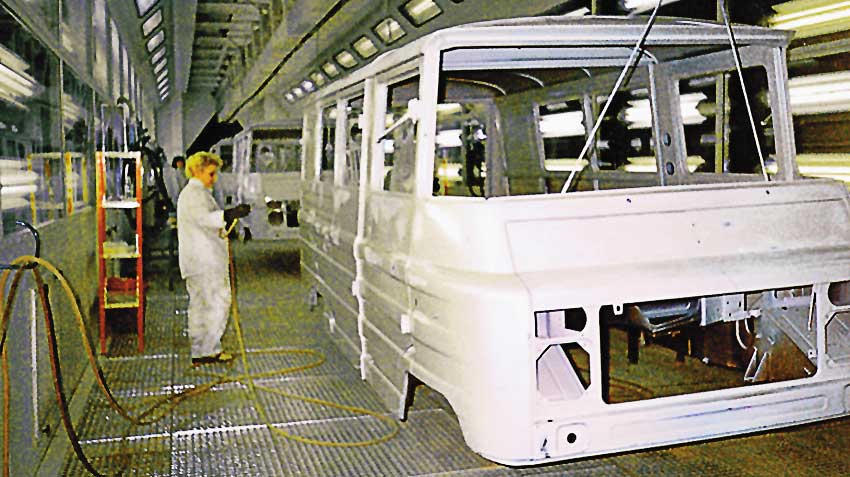
Exactly 20 years ago in Poland ceased production of the popular in your time and the USSR LCV series ŻUK

These light delivery vans Polish in the 1970s and 80s was well known to almost all over the Soviet Union, but, more importantly, of course, in large cities (which can be judged by the documentary and feature films of the time). They were made nearly forty years and for 20 years out of production, but memory of them live not only homeland, but and us in the country.
History:
After the Second world war, the restoration of the Polish automotive industry has gone under the strongest Soviet influence, not to say more. So on the Warsaw car factory (Fabryka Samohodow Osobowyh or FSO) at the Soviet licenses were mastered automobile model GAZ-M-20 "Pobeda" name Warszawa M20, and on the Lublin factory trucks (Fabryka Samohodow Ciężarowych or FSC), respectively, 2.5-ton Soviet truck GAZ-51 under symbol Lublin-51, which for conditions of Poland, decollectivizing agriculture (90% of farms in which left for the"rolikami", tE. independent farmers) was too heavy and energy and what was needed was a more compact and economical pickups. Order such 1956-57, he gave the government of Poland. First a half-ton pickup was created just on the basis of passenger Warszawa, but needed more utilitarian and at the same time more enduring.
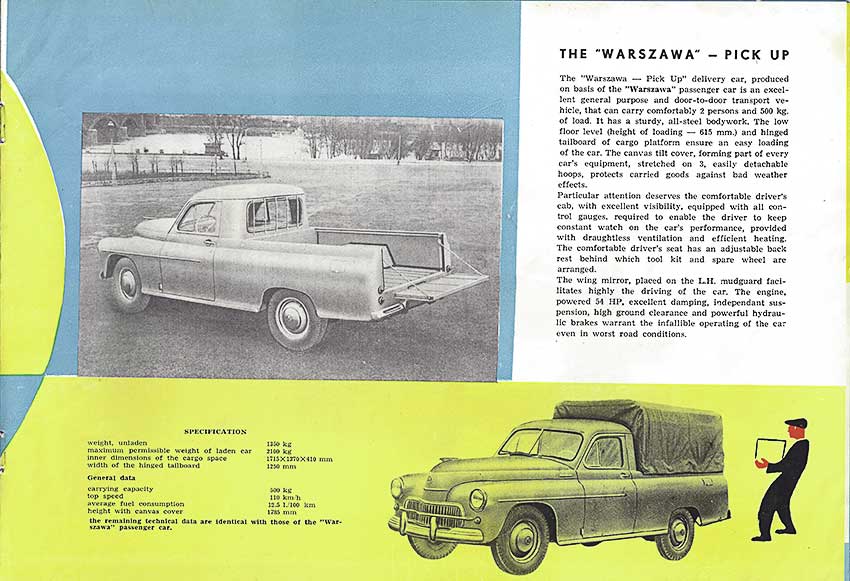
A half-ton pick-up FSO Warszawa 200P release in 1959-1964 he
Such a utility of 0.9-ton pickup ŻUK A-03 on the basis of units Warszawa M20 (including Nizhnekamsky 52-HP engine S-20) was developed by the engineers S. Tang, R. Squarecom and Yuri Kaminsky just on the FSO plant and the name ŻUK ("beetle") the car got for specific "persons not General expression". The prototype was shown at the industrial exhibition in poznań in 1958, where it received positive reviews. The first pilot series of the fifty machines were assembled in Warsaw in the same year. After proper testing, the production in 1959 was transferred to FSC Lublin.
Flat sides with ribs was quite practical for a garage repair. Already in 1960, cab has been improved: "suicide doors" with back loops, i.e. the opening against the passage were replaced by a conventional front hinges, also modified handbrake. In future a line added modification in the form of all-metal van ŻUK A-05 and side of the truck ŻUK A09. By the way, the FSC is also not was sitting with the folded hands and developed in 1958-60, he his version of ŻUK A-08 saddle, strapped the rear axle carrying capacity of 1.5 tonnes, which, however, in the series went.
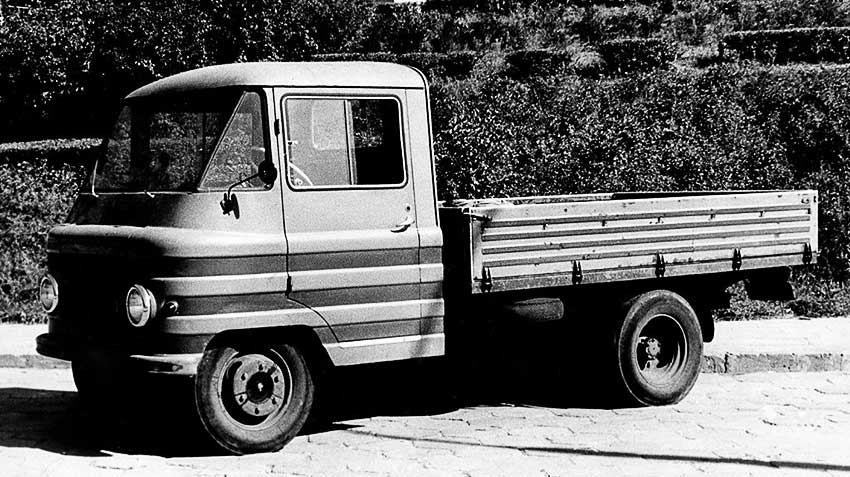
Lorry ŻUK A-08 to the series never got
But the basic version of ŻUK-and was well greeted on export markets.

Export Polish car started to develop with the end of the 1950s
(advertising leaflet 1959 year – FSO Warszawa M-20, Nysa N-59 and ŻUK A03)
In 1966 the obsolete Nizhnekamsky the engine was supplemented with overhead valve S-21 power 75 HP, which increased maximum speed up to 80 95 km/h. the Model was renamed from A-03 in A-13 (A-05 to As-06, respectively), and intended primarily for export.
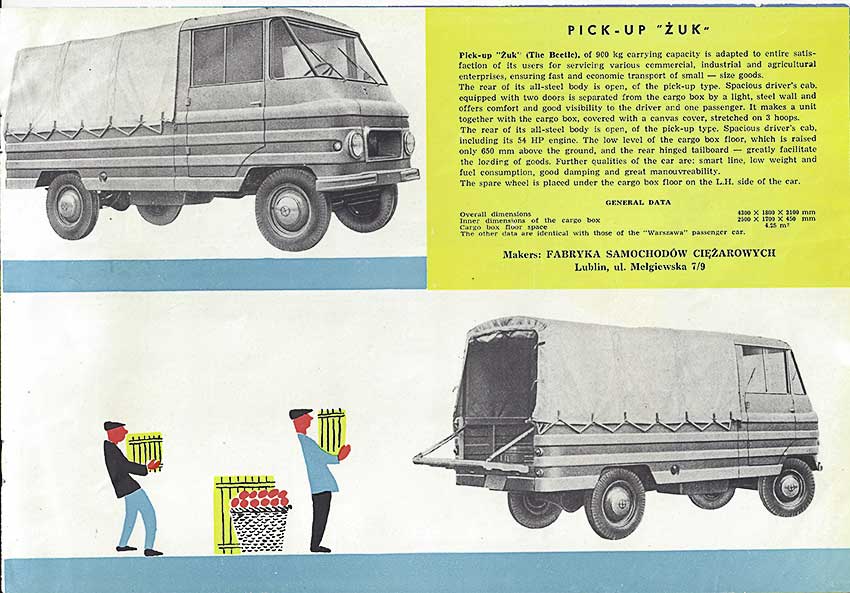
In 1967, overhead valve engine got and flatbed A-11 carrying capacity of 950 kg. the Advantage of this version over the pickup truck was more usable area (4.6 m2) floor smooth and increased loading height is often compensated mechanical handling (forklift). In addition, this version was easy to equip with a body type van-box or any other specialstring.
In the same 1970 was released the 100,000 th ŻUK, and almost half of the production of machines of this series was on export. To the line also added cargo version A-07 on the basis of the van (i.e. in modern "Combi") with longitudinal benches for six passengers and 425 kg or 825 kg without passengers.
In the late 1960s – early 1970s ŻUK even collected in Egypt. For example, KUK.
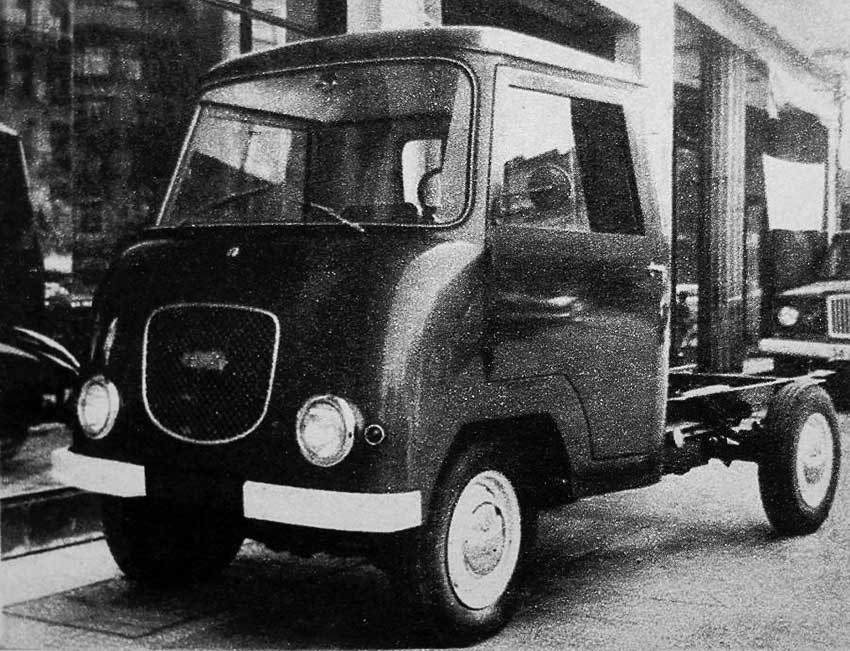
Pickup the Egyptian Assembly KUK-Nysa ŻUK pick-up 1967-1968
In 1972 was made a restyling (development designer S. Tanski involved in the creation of the first version of ŻUK-a), consisting in the replacement of obsolete horseshoe grille (nicknamed smutny ("sad") on rectangular integrated headlights, which by the way, has allowed to increase considerably the width of the hood for ease of maintenance and repair of overhead valve motor. Was also modified the sides of the body and wings, increased windshield and added the washer. In the cabin there were places for attachment of seat belts and new heater with two independent fans. The index was changed to A-11M.

Pickup ŻUK F13B of the sample in 1973
Serial production of the redesigned models began in 1973, and with this year began large-scale delivery in the USSR on the turn of the 1970s and 80s worth 10 thousand in a year.
The demand in the Soviet Union on the Polish malotonnazhnye were caused by their huge deficit, because domestic analogue UAZ-451 was produced in totally inadequate quantities. Our drivers loved ŻUK-and for good reliability, durability and maintainability (in fact, our "Victory"), although its resistance to roll left much to be desired, as confirmed by tests on the testing ground under US by Dmitrov.
In 1974, followed by another upgrade with the introduction of outdoor gear lever (used to be on the steering column), new shock absorbers and steering gear, dual-circuit brake system with vacuum booster, the emergency brake got the drive instead of the drive shaft on drums rear wheels. A number of changes were made in the engine that made it more economical and durable. All this was reflected in the replacement of the letter "M" "In," for example, ŻUK A-11B. In 1975 production of the old series AND ŻUK-03/-07/-09 with the motor M-20 was completely collapsed, and the annual output reached 31 thousand. Started a new expansion of the model range ŻUK-s. So, in 1976 there was "farm" truck AND-16V with dual 5-seater cabin (often staffed 0,43-ton trailer D-17) and also van AND-17V van AND-18V, which were issued in small lots to export, but not only in the Soviet Union, where "farm", shared the cabin was considered simply a political provocation and its implementation became possible only in the post-Soviet period.
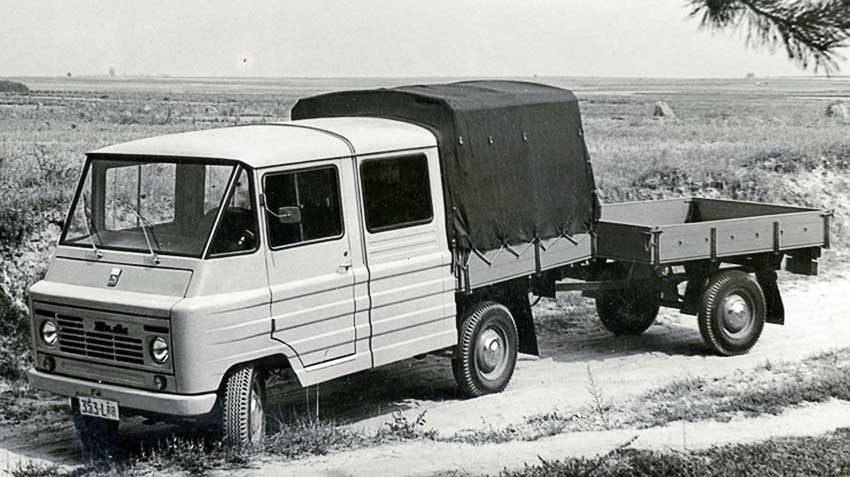
The most politically harmful in the Union vehicle type – a "farm truck" ŻUK A-16B with the trailer D-17
In the 1980s, Poland experienced a prolonged crisis and although the same time was developed a new family of malotonnazhnogo, later known as the Lublin, basic family ŻUK continued to be produced in absolutely unchanged form, gradually losing export markets because of obsolescence. However, the supply of undemanding customers in the USSR was enough to get ends. In 1988, plant diesel engine WSW Andoria S. A. the city Andruchow was mastered the production of diesel 4C90 series (2.4 l, 90 HP), developed under the help of the British firm Ricardo. They began to set and the portion of the issue ŻUK-s until was developed a family of Lublin.
Then in 1989 under the"velvet" and not much "people's" revolution was followed by the collapse of the COMECON bloc, buy freely converteryou currency in the previous numbers of obsolete vehicles from the former Soviet bloc to move to economic and political crisis of the USSR was not in condition. For industry "liberated" Eastern Europe has it's dark days: export of the USSR sharply curled: for ŻUK-and it ended in 1991, although in 1992 the city of Orel on the SP "Lubor" was an attempt to assemble these machines from the Polish kits, but had gathered at least hundreds of machines), the domestic market was actively familiar imported second hand from The West (then the local localized foreign cars, primarily VW Transporter, Ford Transit and MB T1N) , and local producers in fact, was abandoned to the mercy of fate. The attempt of the Alliance with GM from FSC is not possible, but in 1995 from FSO he gave the hands of the Korean concern Daewoo Motor. In 1994, a series of Liblin was adjusted, and then it's another four years has gradually superseded a series ŻUK. Just 13 February 1998 year was made the last car of this model.

Large enough ŻUK-and run in the Polish countryside, but, for example, in our country, they are strikingly out of operation in the first half of the 1990s than was caused by the sharp reduction in procurement of imported spares, and the opening of the market for Western cars and the emergence of domestic "gazelles" and shift to the civil market of the Oise.
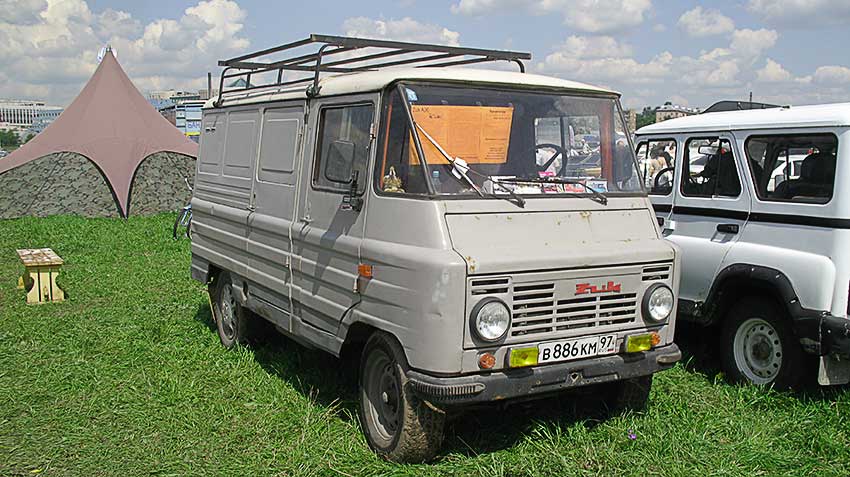
Nearly thirty years later to meet working ŻUK already incredible luck.
.
|
|
|








